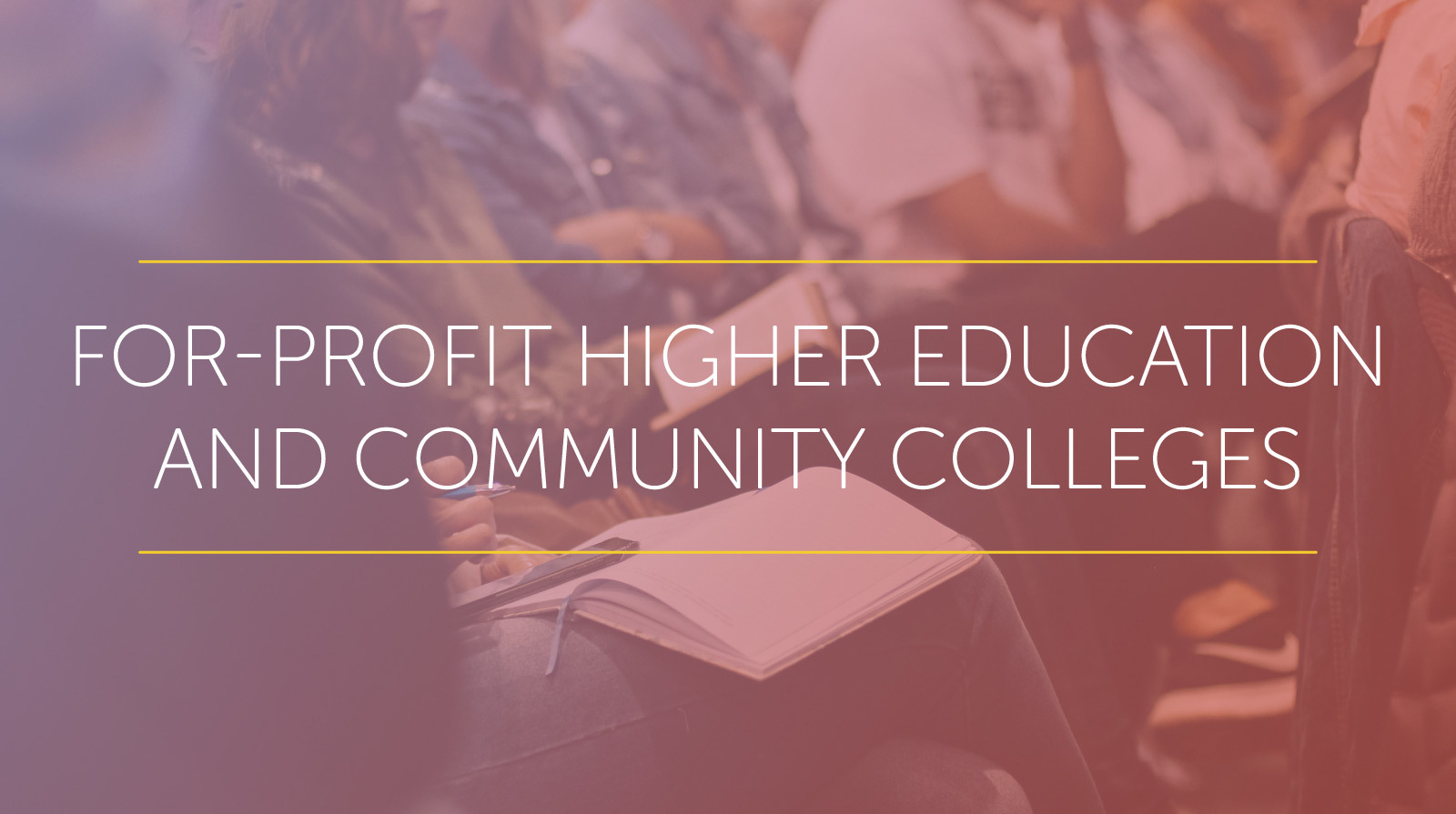A comparison of for-profit and public two-year institutions
For the last ten years or so for-profit colleges have been in the news for a number of scandals, culminating in the widely publicized closure of Corinthian Colleges. Each time these sorts of headlines dominate the news cycle, critics address the same fundamental issues and consumers have learned to be wary of the industry.
However, for-profit colleges share many similar features with community colleges, including a focus on career education and recruiting student populations that have been traditionally excluded from four-year public and private programs. Today we’re taking a look at the for-profit college sector and how it compares to public two-year colleges.
Are for-profit schools and two-year public colleges competitors?
For-profit schools and two-year public colleges draw from the same enrollment base. According the National Center from Education Statistics (NCES), 28% of all two-year degree-granting institutions were for-profits by the beginning of the 2000s. Secondly, minorities make up the largest share of enrollments in for-profit colleges, while public two-year schools came in second. For-profit colleges also enrolled a large number of low-income students, who are represented in large numbers at public two-year institutions as well.
However, according to the Community College Research Center, public two-year institutions still issue the vast majority of associate degrees and certificates, 87% and 84% respectively. This means that the market share of for-profit colleges may have expanded in the last three decades, but it still is relatively small compared to the number of total students served by public two-year institutions. Therefore, it seems the more affordable and traditional public two-year colleges are still preferred by students looking for an alternative academic experience.
Mastering the art of running a school like a business
For-profit schools exist, as the name implies, as businesses looking to make a profit. This means that they run their programs efficiently. Majors that aren’t profitable (in other words bringing in tuition fees) are cut outright. This doesn’t mean for-profit colleges don’t care about offering a quality education. However, they can’t afford to carry majors that end up losing the owners and shareholders money. This means students at a for-profit institution may have fewer major choices available.
For-profit schools also spend a great deal on marketing, far more than non-profit colleges. In 2012 the University of Phoenix was Google’s biggest advertiser, spending $400,000 a day on targeted ads. Other for-profit institutions of higher education were also on Google’s list of the top twenty-five biggest advertisers. These include Kaplan, DeVry Inc, and IFF Educational Services Inc. For-profit colleges invest in marketing because they know that to expand enrollment they have to treat potential students like customers and build their university like a business.
What are the criticisms of for-profit schools?
For-profit schools have been criticized for predatory recruitment processes that target primarily veterans and low-income prospective students. Some for-profit schools misrepresented employment data to attract potential students. The students that enrolled were saddled with large loans to seek certificates or degrees that they could have received more affordably from a public two-year institution, and then couldn’t find jobs. The upshot was an alarming number of loan defaults, which left tax-payers holding the bill. This prompted more government regulation of the entire for-profit education industry.
For-profit schools also lack some of the appealing qualities of a traditional educational experience. Because they are narrowly focused, for-profit schools don’t need traditional campuses or even a full roster of majors. Many operate out of leased office spaces and run the majority of their courses online. Although the flexibility can be appealing, some students might miss having opportunities to explore new interests or bond with a student community.
What can public two-year institutions learn from for-profit schools?
The Community College Research Center compared a reputable for-profit school with three public two-year institutions, and concluded that the for-profit provided a more flexible, convenient and responsive education. Entrepreneurial spirit made the for-profit school more responsive to market-shifts and attuned to the needs of their student customers. They also weren’t tied to traditional academic schedules or campus infrastructure costs and had access to venture capital that the public two-year institutions couldn’t hope to receive.
While none of this means that public two-year institutions should upend their academic models, it does provide some provocative information. First of all, reputable for-profits treat students as consumers and use aggressive marketing and streamlined academic services to keep enrollments up and overheads low. Two-year institutions can do the same. With a better marketing strategy and careful financial planning community colleges can fight the twin perils of falling enrollment and ballooning costs.
Taking the good and leaving the bad
The success of for-profit schools also reveals what kind of marketing is particularly effective when recruiting prospective students. Prospective students care about how an education can advance their career. Many for-profit schools are particularly good at communicating how an education can increase earnings and lead to satisfying careers. Two-year public schools can market their own academic programs with honest information about future career prospects. By doing so, they will attract students eager to improve their economic situation with a valuable credential.
The key to this kind of marketing strategy is providing clear and well-researched content for consumers about the employment opportunities in your area, and how your college’s degree and certificate programs will help them get the job they want. This is the kind of content that Aperture Content Marketing provides. We do the research and you adapt the articles for your community. The resulting custom content is perfectly tailored to attract motivated students looking for affordable and accredited alternatives to a four-year degree.


